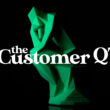A consumer makes about 35,000 choices a day. One every 2.5 seconds. Depending on the category and age cohort, 17 to 29 percent of those choices (so 5,950 to 10,150 of them) relate directly to consumer marketing. CX, CRM, CSAT, and Brand Engagement. Even NPS.
Of those marketing-related decisions, 100% are based on expectations. Like how well each engagement step along the customer journey meets expectations. Or how brand-to-consumer interactions meets expectations. Or how well products or services satisfy. – beyond primacy-of-product and according to what consumers really expect. Success, loyalty, profits, are ultimately all about meeting expectations. Every brand and marketer wants to exceed those expectations. Or say they do. So, how are they doing?
The answer is, not as well as they think.
The problem is most brands and marketers don’t really know what consumers really expect. Most have good intentions. And by now they’ve got the rational values, the “Table Stakes”, things that if they didn’t do, brands wouldn’t be able to compete in their categories, pretty much down. But the expectations that drive choice are mostly-emotional, a 2023 ratio calculated to be 80:20. And traditional research isn’t really designed to measure emotional values.
Expectations are like oil spills. They don’t stay in one spot. They start in one category and spread to others. Heavier in one than another perhaps, but no place, no category, no tactic, and, more importantly, no consumer is ultimately left untouched.
Why? Because people don’t think how they feel, and they don’t say what they think, and they don’t do what they say. And, also, real emotional expectations – the ones brands say they want to exceed – move at the speed of the consumer, faster than brands can keep up. How much? And how much faster?
Expectations move up every year on average 30%. More in categories like Technology, Social Networking, and anything reliant on Experiential marketing, and faster than brands can keep up. Brands, on average, only manage to keep up with those expectations by 10 to12%, leaving an awfully, awfully big gap between what consumers desire and what they see brands delivering. Even elite brands have a hard time keeping up with their category’s average annual-expectation increase, because those expectations are emotionally-driven and consumer-created, and completely unconstrained by reality.
Serendipitously, those gaps represent tangible areas of opportunity for brands. Having an accurate fix on expectations provides brands with the ability to identify not where they are – which is important, but more importantly – where they might go! An Expectations Audit points brands toward ownable strategies, overlooked values, and even unleveraged tactics. But marketers can only do that if they can first identify what those expectations are, the values that will best help to meet those expectations, and then the interactions that will best engage consumers. The very first step for a brand that wants to “exceed customers’ expectations,” is they absolutely need to understand what they are first, then do things to over-deliver against them.
Expectations that consumers hold for those mostly-emotional values turn out to be leading-indicators of consumer behavior, particularly the ones related to marketing choice. They’re the best indicators of marketing success because they are also forward-looking. If it’s easier, think of an Expectation Audit as a predictive early-warning system for your category and brand of consumer change coming your way. It can alert marketers to what’s coming down the road up to 18 months in advance of the marketplace and two years ahead of traditional focus groups and brand trackers. Insights like those allow marketers to pre-calibrate strategies and tactics and make the biggest, most-leveragable improvements in CX, NPS, CRM, and CSAT initiatives well ahead of the competition. They can help guide marketing efforts and also address factors that will drive increased awareness, trial, purchase, loyalty, and profitability, no matter if one is talking about experiential, relationship management, advertising, promotional activities, or the holistic fine-tuning of brand planning.
What adds to the complexity of managing expectations is that since they are emotionally-based, they are not easily identified or explained away. Consumers have never been very good at articulating emotions generally, and expectations specifically. But because there’s a psychological component to the Expectation Audit analytics, it’s more emotionally-precise than smiley face scales or ten-point ratings or “tell-us-more” open-ended response boxes. Those are OK for rational values, but generally speaking those only account for 20% of the consumer’s decision process. You can’t “exceed” expectations if you rely on only one-fifth of what drives consumers’ feelings and brand fortunes.
The good news is that your brand isn’t alone in facing this problem. To be sure, categories are, by their very nature, are different. But no matter how different, the bad news is they’re not insulated when it comes to expectations. Expectations are like oil spills. They don’t stay in one spot. They start in one category and spread to others. Heavier in one than another perhaps, but no place, no category, no tactic, and, more importantly, no consumer is ultimately left untouched.
An Expectation Audit provides professionals in all marketing sectors with exceptionally affordable, emotionally-based, predictive assessments and insights. These metrics are harvested from the world’s largest, most-continuous database of 4.5 million consumer assessments of 1,624 brands in 142 categories. It has been used by some of the world’s largest brands including Apple, Nike, Dunkin’, the U.S. Army, McDonald’s, The Hartford, Citibank, Hyundai, Unilever, P&G, Macys, and AT&T because, not only are expectations the key strategically, they correlate positively with consumer behavior at the 0.80+ level. Adaptable as they are cost-effective, increasing your abilities to better meet expectations can supercharge all aspects of marketing and branding, including CX, NPS, CRM, and CSAT.
The Expectation Audit approach allows a brand to “get under” the consumer’s conscious radar. And brands best able to meet expectations, are literally felt by consumers to better fulfill their needs and desires because expectations represent the hopes and dreams consumers hold for their Category Ideal. Brands that can do that always end up category leaders. Those brands understand their customers’ expectations now – and how and where – they are going because they can:
- Identify consumer expectations (highest to lowest) for your category’s path-to-purchase drivers – for both the Category Ideal and your brand.
- Identify the set of weighted emotions that fuel category expectations.
- Calculate the expectation gap between what consumers truly desire versus what they see as brand delivery.
- Establish an Expectation SWOT Analysis to understand where you really stand versus the competition.
- Provide Driver-by-Driver Expectations Diagnostics to identify what to adjust, how to address, and where to spend to derive the most benefit.
Methodologically, the Expectation Audit is a combination of psychological inquiry and higher-order statistical analyses, that fuses emotional and rational aspects of categories, identifies category-specific path-to-purchase behavioral drivers, and, most importantly, calibrated the real expectations consumers hold for each of those drivers. The Expectation Audit has a test/re-test reliability of 0.93 and produces results generalizable at the 95% confidence level. It has been successfully applied in B2B, B2C, and D2C categories in 35 countries. What’s more, the approach has been independently-validated by organizations like The Advertising Research Foundation, the American Association of Advertising Agencies, and the Association of National Advertisers.
Alexander Pope wrote, “Blessed is he who expects nothing, for he shall never be disappointed,” which may be true. . . but then he didn’t have to deal with 21st century consumers.
And to do that successfully today the very first thing marketers need are accurate measures of what those expectations really are. And an Expectation Audit can help navigate the gap between consumer desire and brand delivery.
Photo by Tom Joseph on Unsplash












